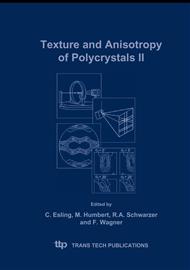p.95
p.101
p.107
p.113
p.121
p.127
p.133
p.139
p.145
Crystallographic Relationships between FCC and BCC Crystals: A Study Using EBSD Techniques
Abstract:
The mechanisms governing the formation of transformation textures during the austenite-to-ferrite transformation are the subject of major debate. In this study, two extreme cases were examined: those of undeformed and deformed austenite. The first involves the transformation of austenite into Widmanstätten ferrite under "equilibrium" conditions in the Gibeon iron-nickel meteorite. This meteorite passed through the transformation at the rate of a few degrees per million years. Such cooling rates cannot of course be reached under laboratory conditions. The second concerns the transformation of hot rolled austenite after a quench into the bainite temperature range. These two behaviors were investigated by means of optical microscopy and electron backscatter diffraction (EBSD) techniques. The orientations of both the parent and product phases were measured and the orientation relationships are represented in Rodrigues-Frank (R-F) space. From the orientation of a particular FCC crystal, the crystallographic orientations of the product BCC crystals can be predicted according to the Bain, Kurdjumov-Sachs (K-S) and Nishiyama- Wassermann (N-W) correspondence relationships. Comparison of the predicted and measured orientations reveals that the Bain rotation is never observed; the K-S and N-W relationships are both observed and there is a continuous distribution of orientations between the exact K-S and N-W positions. The formation of preferred orientations under non-equilibrium conditions is scrutinized. These results are compared to recent models accounting for variant selection.
Info:
Periodical:
Pages:
121-126
Citation:
Online since:
July 2005
Authors:
Price:
Сopyright:
© 2005 Trans Tech Publications Ltd. All Rights Reserved
Share:
Citation:


